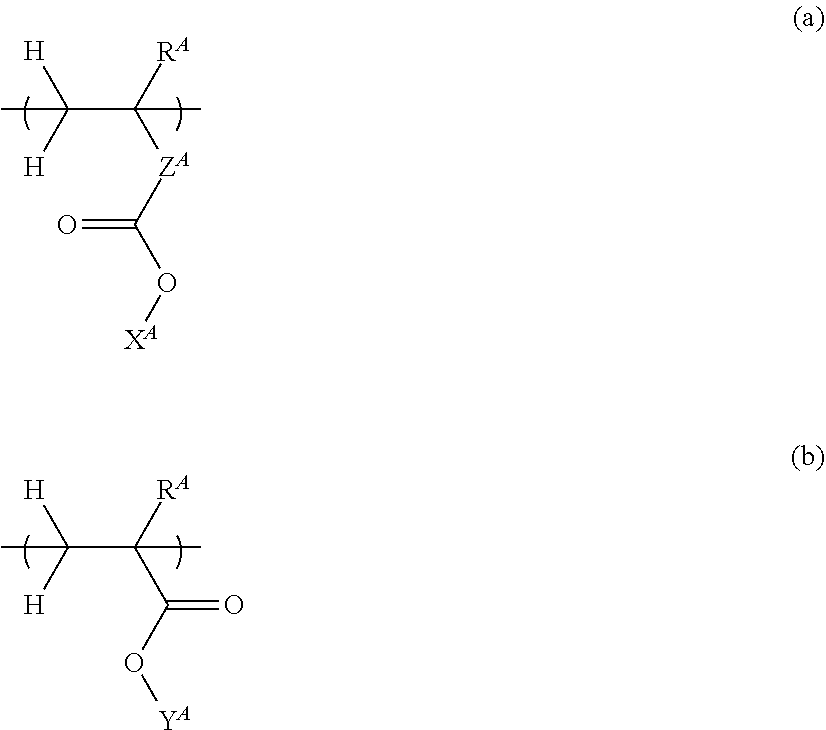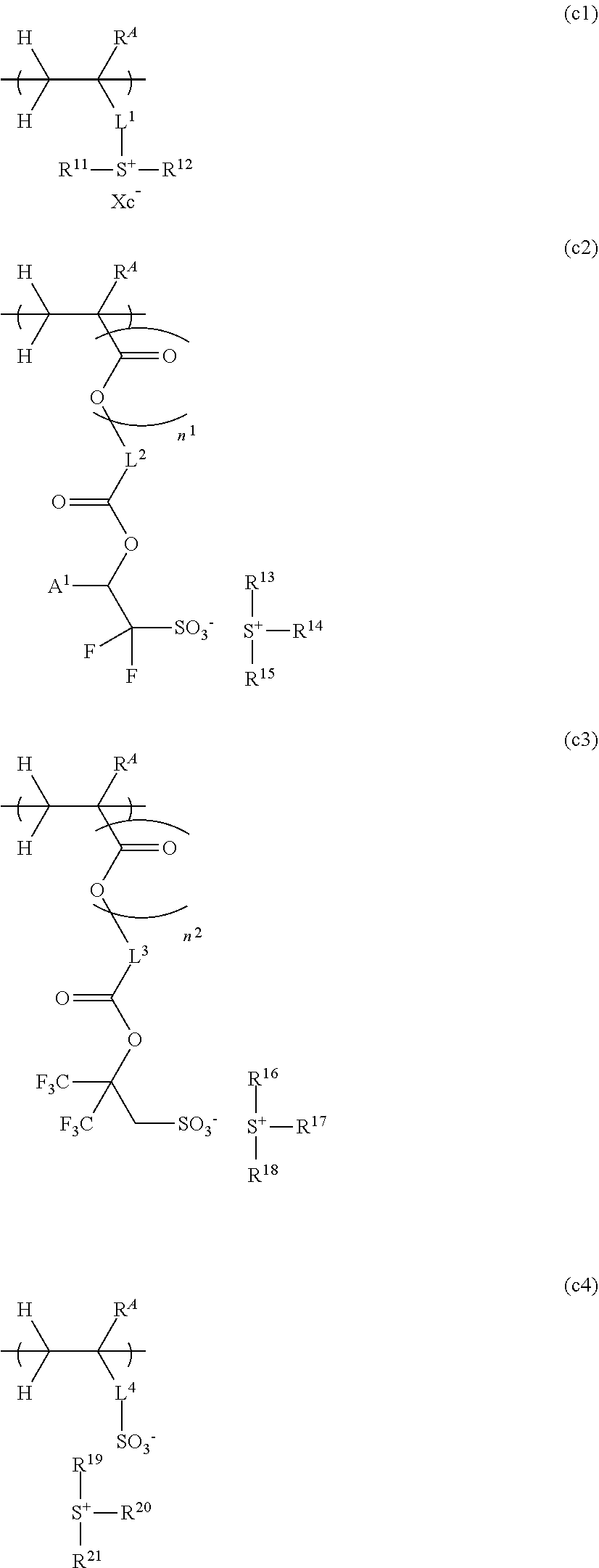Iodonium salt, resist composition, and pattern forming process
a technology of resist composition and composition, applied in the field of resist composition, can solve the problems of unsatisfactory lithography performance, insufficient control of acid diffusion to a full extent, and too large diffusive generated acids to achieve high resolution, etc., and achieve the effect of improving rectangularity
- Summary
- Abstract
- Description
- Claims
- Application Information
AI Technical Summary
Benefits of technology
Problems solved by technology
Method used
Image
Examples
synthesis example 1
[0220]Synthesis of Anion Intermediate C-1
[0221]
[0222]A flask was charged with 260.8 g of a 25 wt % aqueous solution of tetramethylammonium hydroxide. With stirring at room temperature, 154.0 g of methyl 3,3,3-trifluoro-2-hydroxy-2-(trifluoromethyl)propionate was added dropwise. At the end of addition, the solution was heated at 40° C. and aged, with stirring, at the temperature overnight. After the progress of reaction was confirmed by 19F-NMR spectroscopy, 80 g of toluene was added to the reaction solution, which was stirred. The water layer was taken out and washed with 80 g of toluene, obtaining an aqueous solution of the desired anion intermediate C-1. Concentration 1.48 mmol / g.
[2] Synthesis of Iodonium Salt
example 1-1
[0223]Synthesis of Iodonium Salt I-1
[0224]
[0225]After 6.3 g of diphenyliodonium chloride, 16.2 g of the aqueous solution of anion intermediate C-1, 60 g of methylene chloride, 8 g of methanol, 12 g of 1-pentanol, and 16 g of deionized water were mixed and stirred for 1 hour, the organic layer was taken out. To the organic layer, 1.4 g of the aqueous solution of anion intermediate C-1 and 20 g of deionized water were added and stirred, after which the organic layer was taken out. The organic layer was further washed once with 20 g of deionized water, 3 times with 25 g of 25 wt % methanol aqueous solution, and once with 20 g of deionized water. The organic layer was concentrated under reduced pressure to remove methylene chloride, after which 56 g of diisopropyl ether was added and stirred for crystallization. The resulting solid was filtered, rinsed with diisopropyl ether, and dried at 40° C. under reduced pressure, obtaining 5.5 g (yield 56%) of the target iodonium salt I-1.
[0226]1H...
example 1-2
[0232]Synthesis of Iodonium Salt 1-2
[0233]
[0234]After 8.3 g of (4-fluorophenyl)phenyliodonium p-toluenesulfonate (known compound), 16.8 g of the aqueous solution of anion intermediate C-1, 63 g of 1-pentanol, 20 g of methanol, and 20 g of deionized water were mixed and stirred for 4 hours, the organic layer was taken out. The procedure of adding 1.8 g of the aqueous solution of anion intermediate C-1 and 10 g of deionized water to the organic layer, stirring the mixture, and taking out the organic layer was repeated 5 times. The organic layer was further washed 5 times with 10 g of deionized water. The organic layer was concentrated under reduced pressure to remove the solvent, after which 68 g of diisopropyl ether was added for crystallization. The resulting solid was filtered, rinsed with diisopropyl ether, and dried at 40° C. under reduced pressure, obtaining 5.7 g (yield 61%) of the target iodonium salt I-2.
[0235]1H-NMR (500 MHz, DMSO-d6):
[0236]δ=6.36 (1H, s), 7.40 (2H, m), 7.52...
PUM
| Property | Measurement | Unit |
|---|---|---|
| refractive index | aaaaa | aaaaa |
| feature size | aaaaa | aaaaa |
| temperature | aaaaa | aaaaa |
Abstract
Description
Claims
Application Information
 Login to View More
Login to View More - R&D
- Intellectual Property
- Life Sciences
- Materials
- Tech Scout
- Unparalleled Data Quality
- Higher Quality Content
- 60% Fewer Hallucinations
Browse by: Latest US Patents, China's latest patents, Technical Efficacy Thesaurus, Application Domain, Technology Topic, Popular Technical Reports.
© 2025 PatSnap. All rights reserved.Legal|Privacy policy|Modern Slavery Act Transparency Statement|Sitemap|About US| Contact US: help@patsnap.com



